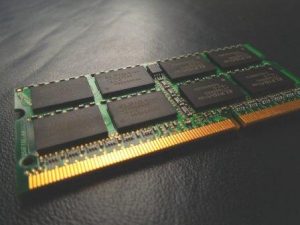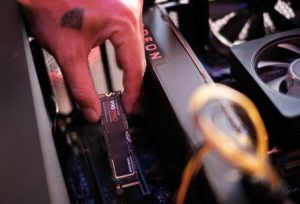
Blogging for Money: How to Build a Profitable Online Presence: 7 important steps
Blogging for Money: How to Build a Profitable Online Presence: 7 important steps In this post, we will delve into the world of blogging for money, exploring various tips and strategies that can help you transform your blog into a profitable venture. In today’s digital age, blogging has evolved from a mere hobby into a lucrative career option. Many individuals have turned their passion for writing into a full-time profession, earning substantial incomes from their blogs. The concept of “blogging for money” has gained immense popularity, and for good reason. let’s know How we can do blogging for money : 7 important steps Choose Your Niche Wisely When it comes to blogging for money, your choice of niche is critical. It’s essential to select a niche that not only aligns with your interests and expertise but also has a substantial audience and monetization potential. Popular niches like health, finance, travel, and technology often attract a larger audience and more opportunities for revenue generation. Create High-Quality, Engaging Content Quality content is the cornerstone of a successful blog. To attract and retain readers, you must consistently produce informative, engaging, and well-researched posts. This not only helps in building a loyal readership but also enhances your credibility within your chosen niche. High-quality content can also improve your blog’s search engine ranking, increasing its visibility and traffic. Invest in Professional Design and Branding First impressions matter in the world of blogging. An attractive and user-friendly blog design, along with a strong branding strategy, can set you apart from the competition. A visually appealing blog with a memorable logo and consistent branding elements can help establish your blog as a trustworthy and professional source of information. Optimize for SEO Search engine optimization (SEO) is essential for driving organic traffic to your blog. Conduct keyword research to identify relevant keywords related to your niche, and then incorporate them strategically into your content. Additionally, focus on optimizing your blog’s on-page SEO elements, including meta titles, meta descriptions, and image alt tags. Build a Strong Social Media Presence Social media can be a powerful tool for promoting your blog and connecting with your audience. Create profiles on popular social platforms like Facebook, Twitter, Instagram, and Pinterest, and regularly share your blog content. Engage with your followers, respond to comments, and participate in relevant conversations to increase your blog’s visibility and reach. Monetization Strategies Now, let’s dive into the heart of the matter—monetization. Blogging for money involves implementing various strategies to generate income from your blog. Here are some effective ways to monetize your blog: a. Affiliate Marketing: Affiliate marketing allows you to earn a commission by promoting products or services on your blog. You can join affiliate programs related to your niche and include affiliate links in your content. When readers make a purchase through your affiliate links, you earn a commission. b. Display Advertising: Display ads, such as Google AdSense, can be a steady source of income for bloggers. These ads are placed on your blog, and you earn revenue based on ad impressions and clicks. c. Sponsored Content: Collaborate with brands and businesses in your niche to create sponsored content. You can get paid for writing posts, creating videos, or posting on social media about their products or services. d. Selling Digital Products: If you have expertise in your niche, consider creating and selling digital products such as eBooks, online courses, or printables. These products can provide a significant income stream for your blog. e. Membership and Subscription Models: Offer premium content or a membership area on your blog that requires a subscription fee. This model works well for bloggers who can provide exclusive content or resources to their loyal readers. f. Freelance Writing and Consulting: Showcase your expertise through your blog and use it as a platform to attract freelance writing gigs or consulting opportunities in your niche. 7. Monitor and Analyze Performance Regularly monitor the performance of your blog and the effectiveness of your monetization strategies. Use analytics tools to track traffic, conversion rates, and revenue. Adjust your strategies based on the data to optimize your blog’s profitability. Conclusion Blogging for money is not a get-rich-quick scheme, but with dedication, passion, and strategic efforts, it can become a lucrative endeavor. By choosing the right niche, creating valuable content, optimizing for SEO, building a strong online presence, and implementing diverse monetization strategies, you can unlock the potential of blogging for money. Remember, success in the blogging world takes time, persistence, and a commitment to delivering value to your audience. So, start your blogging journey today, and who knows, you might soon find yourself enjoying the financial rewards of your hard work. Happy blogging for money! Friends, you have just read the post “Blogging for Money: How to Build a Profitable Online Presence: 7 important steps” we hope you will like this post. If yes then share it with your friends and keep visiting our website for more such posts. If you interested to read about Astrology & Hindu Religion : Click here …………………………… Technological Tips Also read : Find My RAM: A simple method to know RAM of Computer Also read : Windows 11 vs Windows 10: A Comprehensive Comparison of the Two Operating Systems Also read :How to Go Viral on Instagram Reels: A Guide to Capturing Attention Also read :What is Bus in Computer Systems: Understanding Its Role in Data Transfer Also read :Computer Memory: An Introduction to Storing and Retrieving Data Also Read : What is Deep Learning, Key Concepts & Important 5 Applications of Deep Learning Also Read : Google Cloud AI: Shaping the Future of Intelligent Applications Also Read :Dark Web Secrets, it’s 4 main Characteristics, how can we access dark web & what is the dark web used for Health & Wellness Also Read : Heavy Periods after Pregnancy: Causes, Symptoms, and Management are explained in detail Also Read : Women’s Reproductive Health: Empowering Women through Knowledge and Care Also Read : Fatty Lower Abdomen No More: Secrets to a
Blogging for Money: How to Build a Profitable Online Presence: 7 important steps Read More »









